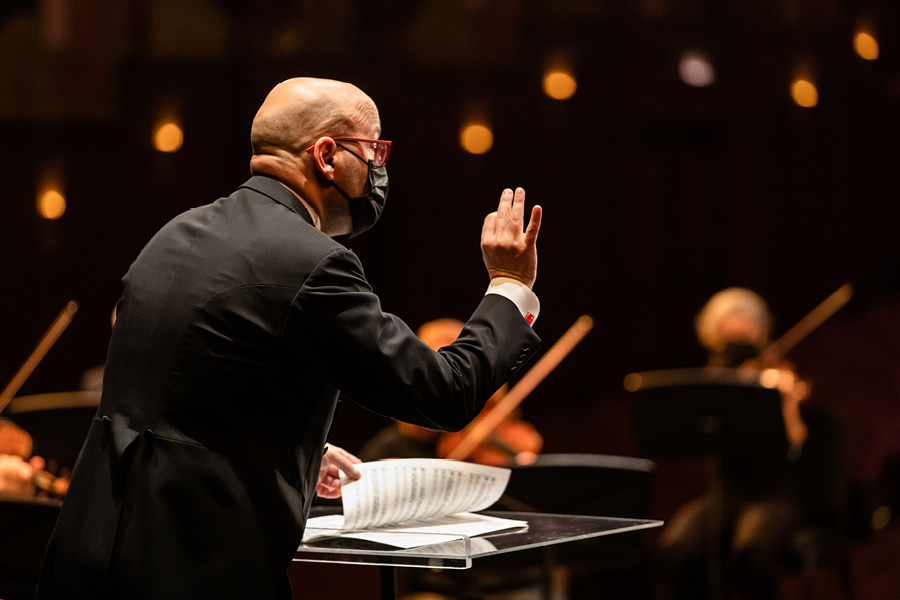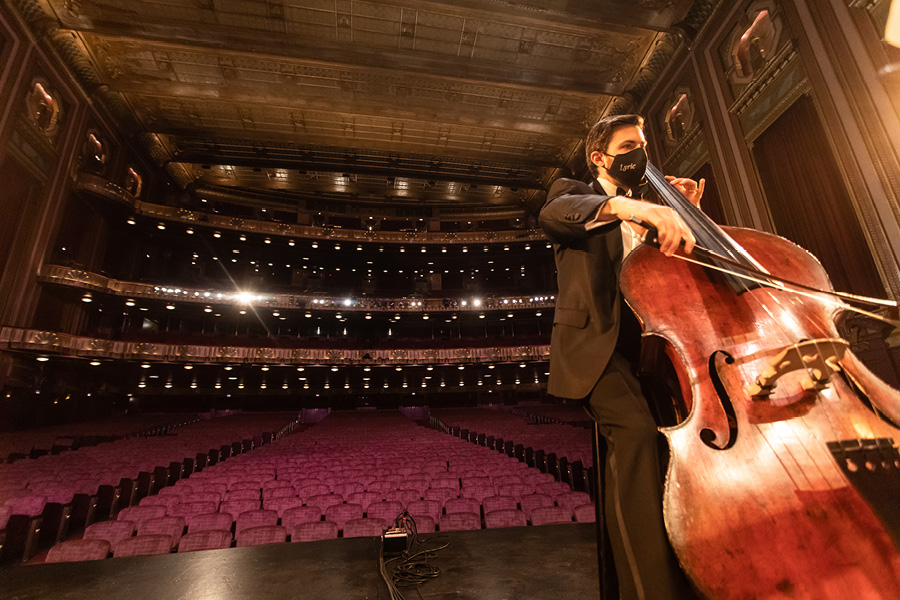April 12, 2021
Behind the Rossini Sonatas
Listening to any of the lovely string-ensemble works in The Sonata Sessions, introduced and conducted by Lyric’s Music Director Designate Enrique Mazzola and performed by members of the Lyric Opera Orchestra on our beautiful stage, you’re likely to have your mood boosted by the buoyant melodies and spirited rhythms. You may detect traces of “sounds-like” musical influences from certain classical composers. You might even notice that at times the lower instruments carry the tune, rather unusually. Cool.
It’s likely you’re not thinking, “Pretty fly for a pre-teen guy,” or “It’s all about that bass.” You’re simply enjoying these musical interludes, which last about 15 minutes, give or take a bit.
Here’s the backstory: This kid composer, one Gioachino Rossini, was born Feb. 29, 1792, in Pesaro, Italy, the only child of two musicians (his mother sang, his father played trumpet), and was musically gifted from the start. His family moved to Lugo in 1802 and he studied music with a priest whose library included scores by Mozart and Haydn, who weren’t well known in Italy at the time. Those non-Italian influences would definitely make an impression on the mini Rossini.

Music Director Designate Enrique Mazzola conducts members of the Lyric Opera Orchestra onstage at the Lyric Opera House.
Music camp wasn’t a thing yet at the turn of the 19th century, so Rossini spent the summer with an amateur bass player in Ravenna when the talented youngster was 12. It was there that he wrote the six string sonatas, which were unconventionally scored for two violins, cello, and bass, with lots of solo lines for the latter, for the benefit of his musical host-benefactor. (Traditional string quartets comprise two violins, viola, and cello.)
Whether or not the impetuous youth actually cranked them out in three days, as he claimed, Rossini showed a clear compositional gift that put him on par with young Mozart as a child prodigy. The Rossini sonatas are crafted with great assurance, individuality, “and more than a little of the humorous and witty personality into which he was to develop: in addition, they make enormous technical demands on the players,” as noted in Gramophone magazine.
The cheeky young Rossini described the first playing of the sonatas by his host on bass fiddle and a pair of brothers on cello and first violin as “performed in a doggish way,” adding that his own playing on second violin “was, to tell the truth, the least doggish.”

Maestro Enrique Mazzola on the podium. He also provides video introductions for each of the sonatas in this virtual series.
Five of Rossini’s “sonate a quattro” (sonatas for four) were first published in 1826 as standard string quartets. There are also wind-instrument arrangements of the works. In a blurb describing the sonatas, music publisher Boosey & Hawkes praises them for their “astounding precociousness, and a sound grasp of the music of Haydn and Mozart. Each player is given his own voice, and each work poses considerable difficulties for the players—especially the second violin part, which Rossini wrote for himself. Such a surprising amount of emotional depth to be found in these works that belie the age of the composer!”
These days, Rossini’s string sonatas are often performed and recorded by larger string ensembles, as we have done at Lyric. Each of the six is composed in a different major key and in three movements; in three of the sonatas, the middle “Andante” movement is written in a minor key. We hope you enjoy these sparkling performances as much as Lyric’s musicians and maestro enjoy performing them for you!

Lyric Opera Orchestra Principal Bass Ian Hallas performs in The Sonata Sessions.
The Sonata Sessions
The Sonata Sessions
Gioachino Rossini was — unbelievably — only 12 years old when he wrote six gorgeous string sonatas while spending a summer in Ravenna, Italy. Originally written for a string quartet, Music Director Designate Enrique Mazzola leads an enhanced string ensemble featuring members of the Lyric Opera Orchestra in performances of all six of these beautiful, lesser-known pieces. Each video in the digital series will feature one of the sonatas, with new videos being released every week.

